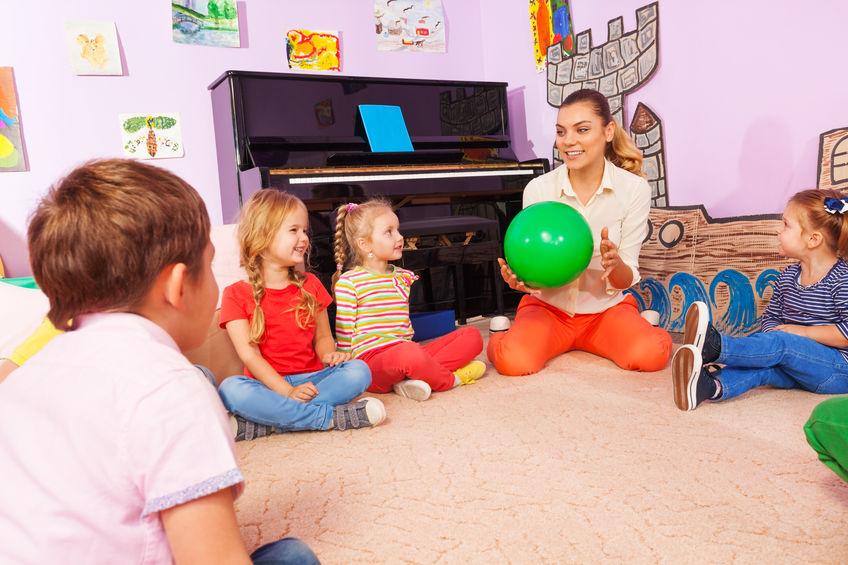 Music and Children’s Development and Learning
Music and Children’s Development and Learning
Music activities for kids and movement have such a profound effect in a child’s development and learning. Children learn about themselves and their world through physical exploration, discovery and interaction with their surroundings. Howard Gardner calls this kinesthetic intelligence. Piaget called this the sensory-motor stage of development, a critical part of the way young children learn.
As parents and teachers, it is invaluable to provide activities and movement that push a child’s full mental and physical potential. Musical activities that include movement are also extremely empowering in that they include the learning of musical concepts. Rhythm, singing, listening, improvisation and memory are just a few of the concepts that are learned when including musical activities with movement.
The Simple Power of Musical Activities
To illustrate how many concepts can be learned at once through musical activities, let’s use the example of Head, Shoulders, Knees and Toes. This is a song most of us are familiar with and more likely than not, have sung as a child in school. We can probably still remember the words, the melody and most importantly, the accompanying movements. We point to our head, shoulders and then toes, in varying speeds as the song speeds up. In this one seemingly simple musical movement activity, children, using their own bodies, learn about singing, tempo, dynamics, their physical space, body parts, imitation with others and memory. And you thought it was just a silly song?
Examples of Musical Activities
At the end of this post, we’ve included links for many resources that will help you get started with music activities for kids. One thing to keep in mind is that the best activities can be created using your own creativity. Your own experience and relationship with music is connected deeply to your inner being. Use that to connect creatively and musically with your class. What moves you musically? What gets you up to dance? What gets you to sing at the top of your lungs? Clap your hands?
Using your own joy of music will come through in the activities that you choose for your kids and students. Not to mention that you will do those music activities with a lot more enthusiasm because they means something to you.
Okay, will all of that said, here are some ideas to get you started.
Sample Musical Activity
- Play a piece of music with a strong beat and a medium tempo, not too fast, not too slow.
- Teacher (T) begins clapping the beat.
- Teacher (T) taps the beat on several parts of his or her body.
- Teacher (T) walk to the beat.
- Children (C) form a circle holding hands and swaying to the beat.
- Children (C) create their own movements.
One thing to keep in mind is that it doesn’t need to be complicated. Keeping it simple is always the best idea. Introduce one concept at a time. Stay on that concept for a few minutes before moving on. Let the children enjoy the music, singing and feeling it in their movements. Unlike adults, children almost always want to get up and dace, move and be silly. Use that energy and turn it into a fun music activity for kids.
Music and Movement Drum Game for Kids
For this game, Tap out a steady beat on the drum while chanting a corresponding tempo description. For example, drum slowly and say “largo” or “slow, slow, slow” to the beat. Then “moderato” or “medium” for a medium tempo, “allegro” for a fast tempo, and “fast, fast, fast” for a really fast tempo. I always start slow, then gradually move up in tempo. After a few seconds of presto speed, I will shout, “stop!” The idea is to get the kids to march to the tempo of the drum. So they will start by marching slowly and eventually end up running crazily around. As soon as I shout “stop,” students have to freeze in the position that they were currently in. Then I start drumming and chanting a slow tempo and encourage the boys to move to the tempo again.Resources
- HowstuffWorks.com – Music Activities
- MomJunction.com – 19 Amazing Music Games and Activities
- National Association for Music Education – Classroom Games and Activities
- TunedintoLearning.com – Music for Autism Activities
Conclusion
Now obviously, the topic of the benefits of music and movement span much more than can be talked about in a simple blog post. However, my intention with this post was simply to make you aware of two things. First, that combining music and movement with your child or students and turning that into fun activities is extremely powerful for their cognitive, social and emotional development. Secondly, it’s that you have it within you to do this already!
You don’t need any fancy materials or equipment. Simply turning the radio on and dancing, singing and having fun with your students is already something extremely beneficial to them on so many levels. Not to mention fun for you too! Throw in some musical concepts, clapping, singing, imitation and improvisation and you’ve got a full blown awesome music activity.
Have any great music activities you already do that work great? Great! Share them below so we can all bring it to our classrooms too.
Our curriculum was created to make your music teaching experience an easy one. Click here to read more about the Color Me Mozart system.



